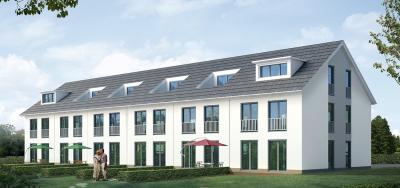Will you be ready for the Future Homes Standard?
The UK has set an ambitious target of net zero carbon emissions by 2050. Homes are a significant contributor to greenhouse gas emissions responsible for 15% of the UK's total emissions in 2018. What's more – unlike other sectors such as business, transport and energy supply – residential homes saw emission levels rise between 2017 and 2018.
Action to reduce emissions is clearly needed. That's where the new Future Homes Standard comes in, helping us towards that net zero goal. Homes being built now will still be there in 2050 so getting them built right and to high environmental standards is a crucial part of meeting the targets. The MHCLG aims to introduce the Future Homes Standard by 2025.
Initially, the Future Homes Standard will change Parts L (conservation of fuel and power), F (ventilation) and Part 6 (energy efficiency) of the Building Regulations. The aim is to bring builders, installers and supply chains closer to achieving the Future Homes Standard when it is implemented.
MHCLG has launched a consultation on the Future Homes Standard and changes to Parts L and F. The consultation runs from 1 October 2019 to 10 January 2020 7 February 2020 (the deadline has been pushed back) and is aimed at:
- property developers and builders
- property owners and occupiers
- construction industry professionals
- manufacturers and suppliers of construction materials
- environmental organisations
- local authorities
The consultation relates to England only and sets out two options for improving energy efficiency standards and requirements:
- Option 1 aims for a 20% reduction in carbon emissions, primarily achieved through very high fabric standards.
- Option 2 aims for a 31% reduction in carbon emissions using low carbon energy sources and improved fabric standards, though less so than Option 1.
Option 2 is the preferred choice of MHCLG and the comparison of household energy costs shows Option 2 would appear to have a much better payback period than Option 1.
The uplift of the energy efficiency requirements for new homes is expected to be implemented in 2020 and the consultation will also seek views on changes to the transitional arrangements.
Much work to be done
MHCLG's view is that industry needs to develop the necessary supply chains, skills and construction practices now and new homes need to be future-proofed to enable the installation of low-carbon heat without retrofitting later.
The consultation also sets out what the Future Homes Standard may look like in order to put the changes to Parts L, F and Part 6 into context. Additionally, a consultation version of the new SAP has been published to allow consultees to model the effects of the uplift options.
MHCLG has also scheduled further consultations on energy efficiency and ventilation of existing dwellings and new and existing non-domestic buildings, Part L beyond 2025 and reducing the overheating risk in new dwellings. A further consultation on the Part F (ventilation) requirements for existing buildings affected by improved thermal efficiency is expected this autumn.
The Future Homes Standard will be implemented through the Building Regulations, making it the national minimum energy performance requirement for all new homes in England. A consultation on the full technical details of the Future Homes Standard and the associated impact assessment with costings will be published before introducing it in 2025.
Make sure you are ready for the 2020 changes to Parts L and F.
View the consultation and have your say before 7 February
Further information
- Committee on Climate Change website
- Energy and sustainability services provided by LABC
- Homeowners' guide to making your home energy efficient
- List of government consultations (you need to be registered on the LABC Members website to view this page)
- LABC's draft response (you need to be registered on the LABC Members website to view this page)
Sign up to the building bulletin newsletter
Over 48,000 construction professionals have already signed up for the LABC Building Bulletin.
Join them and receive useful tips, practical technical information and industry news by email once every 6 weeks.
Subscribe to the Building Bulletin




Comments
Ychwanegu sylw newydd